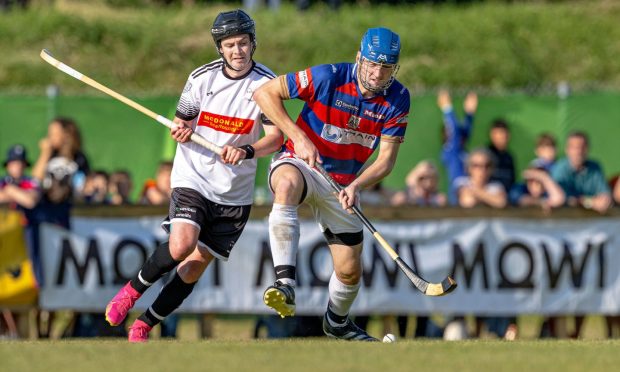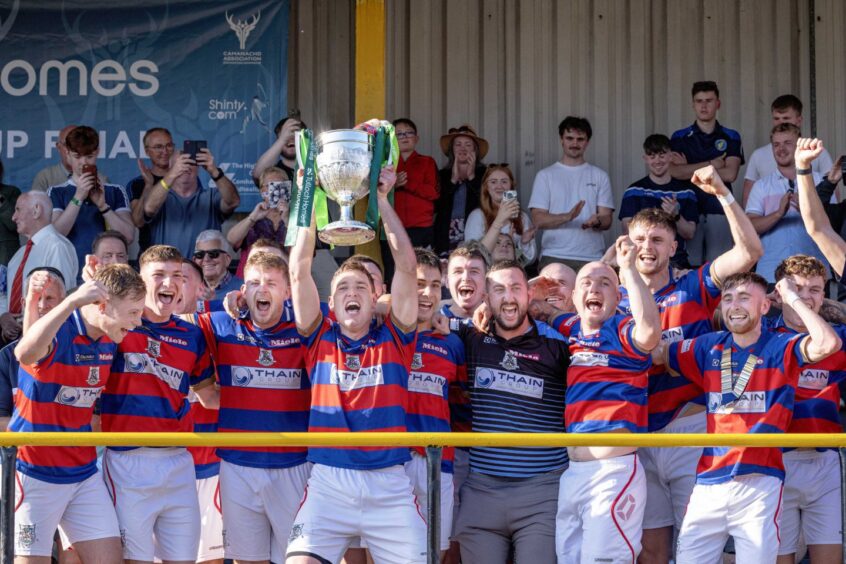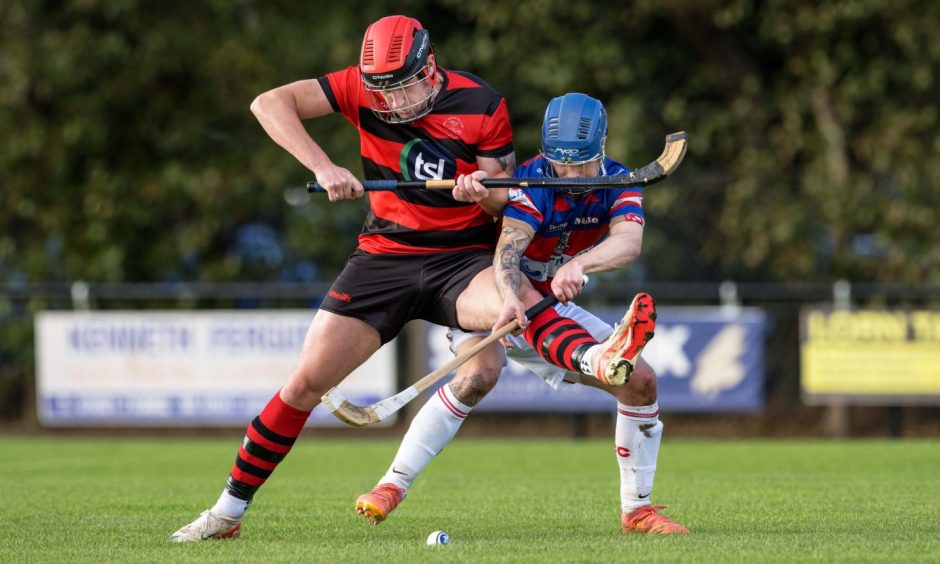Sometimes decribed as “hockey without any rules”, shinty remains a popular sport in the north of Scotland.
It is believed shinty was introduced to Scotland by Irish missionaries with hurling having been played in Ireland for around 2,000 years.
In shinty a player is allowed to hit and control the ball using both sides of the stick, called a caman, which is wooden and slanted on both sides.
The Camanachd Association, the world governing body of shinty, was formed in October 1893 at the Victoria Hall, Kingussie. By the time of the meeting in 1893 there were 33 recognised clubs.
The first Camanachd Cup final was played in Inverness on 25 April 1896 between Kingussie and Glasgow Cowal. Kingussie won the match 2-0.
Who are the most successful shinty teams?
Newtonmore have won the Camanachd Cup, shinty’s premier competition, on 34 occasions – more than any team. Their most recent success was in 2019.
Kingussie have closed the gap on More after dominating the national competition in recent years by winning the Camanachd Cup in 2022, 2023 and 2024 to take their total number of triumphs to 26.
Kyles Athletic are the next most successful team in the history of the Camanachd Cup with 21 wins.
How does the league system work in Scotland?
Since 2016, the shinty league system consists of four tiers:
- Tier one: Premiership – 10 teams, bottom team relegated to National Division One
- Tier two: National Division One – bottom team relegated to relevant regional league
- Tier three: North Division One and South Division One – Play-off for champions for promotion to National Division One. Bottom team relegated to relevant regional league
- Tier four: North Division Two and South Division Two – Champions promoted to regional Division One
Teams are awarded two points for a win and one point for a draw.
What does a shinty pitch look like?
According to the Camanachd Association’s rules, the field of play must be rectangular, its length being not more than 170 yards nor less than 140 yards and its breadth not
more than 80 yards nor less than 70 yards.
The centre of the field shall be indicated by a suitable mark with a circle of five yards radius marked round it.
There is a ten yard area marked out in front of each goal and a penalty spot 20 yards from each goal. A semi-circle of five-yard radius is drawn behind each penalty-hit mark.
How many players on a team?
A shinty team starts the game with 12 players, one of whom will be the goalkeeper. A maximum of five substitutes can be named.
All players in the adult game must be aged 16 at the time of registering for the season.
A club can field a player under this age on the condition that a parent or guardian consent form is completed and countersigned by a club representative confirming that
the player is ready to compete in the adult game. The minimum age for participation in the adult game is 13 years of age.
Do shinty players have to wear helmets?
A Camanachd Association proposal to bring forward the mandatory wearing of shinty helmets fell just one vote short of being passed at the Camanachd Association’s annual general meeting in December 2024.
It was previously agreed the wearing of a compliant helmet and approved faceguard will become mandatory for all players on 1 January 2030.
The new proposal before the AGM stated all players must wear a compliant helmet (with faceguard optional) in training and games from 1 January 2027 but it failed to gain enough support by the smallest of margins.
How long is a game?
The duration of the game shall be two equal periods of 45 minutes with allowance made in each period for time lost due to injury.
The referee will start the game by throwing up the ball to a minimum height of 12 feet between two opposing players standing at the centre spot, at least three feet apart, with their camans crossed above head level. No other player shall be within five yards of the
centre spot until the ball has been played.
Any other shinty rules I should know?
A goal is scored when the whole of the ball has passed over the goalline and under the crossbar, except when resulting directly from a freehit or when it has been kicked, carried or propelled by hand or arm by a player of the attacking side.
A foul is awarded during a game when a player intentionally commits any of the following offences:
- kicks the ball
- kicks or attempts to kick an opponent
- jumps at an opponent
- charges an opponent from behind
- charges an opponent in a violent or dangerous manner
- uses his/her caman in a violent or dangerous manner
- pushes an opponent
- trips an opponent
- strikes or attempts to strike an opponent with his/her hand, arm
or caman - strikes or impedes an opponent’s caman, except to “block”, “hook”
or “cleek” a caman which is within striking distance of the ball - throws his/her caman
- attempts to participate in the game without his/her caman in
his/her hand - holds an opponent or an opponent’s caman
- obstructs an opponent
- handles the ball (the goalkeeper is permitted to stop and slap
the ball with his/her open hand within the Ten Yard Area. - heads the ball. This would be penalised by the award of a free-hit to be
taken by the opposing side at the place where the offence
occurred.
Click here to read the Press and Journal’s latest shinty news and reports.



Conversation